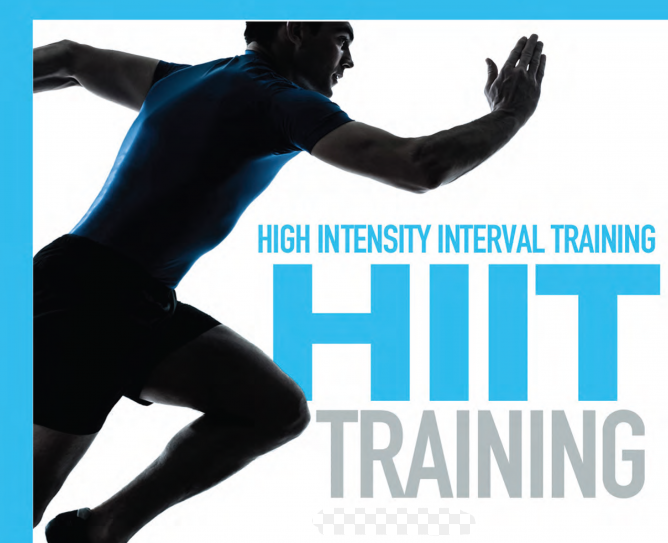High-intensity interval coaching is delineated as AN exercise session composed entirely of HIIT techniques, or as a part of AN exercise arrange.
WHEN IT involves workouts for leaning out, longer isn’t forever higher. What’s additional necessary to obtaining those fat-torching benefits: Intensity. By using a HIIT theme and victimisation multijoint exercises, you’ll not solely burn calories throughout the sweat except for several hours once, as those hard-worked muscles still crave energy to revive equilibrium.
By combining bouts of compound strength coaching moves with high-energy cardio—in the shape of burpees—“this sweat is intended to burn fat whereas sculpting your total body,” says Derek DeGrazio, trainer and managing partner of Barry’s Bootcamp South Everglade State. “Best of each world!”
TRAINING
Trainer: HIIT vs. Tabata
Our skilled explains what sets these 2 fitness trends apart.
For the compound strength moves, use a load that you just will safely management for the one-minute length. And don’t save on those rest intervals—they guarantee your body is prepared for subsequent spherical of weight-training intensity.
60 seconds squat to overhead press
30 seconds burpees
30 seconds rest
60 seconds deadlift to upright row
30 seconds burpees
30 seconds rest
60 seconds curl to overhead press
30 seconds burpees
30 seconds rest
60 seconds alternating forward lunge with curls
30 seconds burpees
30 seconds rest
60 seconds bent-over row to tricep kickback
30 seconds burpees
30 seconds rest
60 seconds renegade rows with push-ups
30 seconds burpees
30 seconds rest
60 seconds push-ups with alternating side planks
30 seconds burpees
30 seconds rest
60 seconds plank
High-Intensity Interval Training (HIIT)
What is HIIT?
High-Intensity Interval Training (HIIT) involves alternating short bursts of near-maximum effort exercise with periods of moderate activity or rest. A typical session begins with a warm-up, followed by several high-intensity intervals separated by recovery phases, and finishes with a cool-down.
-
High-intensity intervals: Performed close to maximum effort.
-
Recovery phases: Usually at ~50% intensity.
-
Duration: Sessions can be as short as 4 minutes or as long as 30 minutes, depending on the protocol.
Because HIIT condenses intense work into a short period, it is considered one of the most time-efficient training methods. A timer or clock is often recommended to track intervals and ensure accuracy.
Common HIIT Protocols
Peter Coe’s Training (1970s)
-
Developed for his son, Sebastian Coe.
-
Inspired by German coach Woldemar Gerschler and Swedish physiologist Per-Olof Åstrand.
-
Involved repeated 200-meter sprints with just 30 seconds of rest.
Tabata Method (1996)
-
Created by Professor Izumi Tabata with Olympic speed skaters.
-
Structure: 20 seconds of ultra-intense effort (~170% VO₂ max), 10 seconds rest, repeated 8 times (4 minutes total).
-
Showed major improvements in both aerobic and anaerobic fitness.
-
Today, “Tabata training” is often used loosely to describe various HIIT routines.
Gibala Protocol (2010–2011)
-
Developed by Professor Martin Gibala at McMaster University.
-
2010: Warm-up → 60 seconds intense effort (95% VO₂ max) → 75 seconds rest → repeat 8–12 cycles.
-
2011 (beginner version): Warm-up → 10 × 60-second bursts at 80–95% intensity, each followed by 60 seconds recovery → cool-down.
-
Designed for the general public and sedentary individuals.
Zuniga Protocol
-
Developed by Professor Jorge Zuniga at Creighton University.
-
Focused on maximizing oxygen consumption in minimal time.
-
Structure: 30 seconds at 90% max power, 30 seconds rest.
-
Implemented successfully in Creighton’s Army ROTC program.
Vollaard Protocol
-
Proposed by Dr. Niels Vollaard (University of Stirling).
-
Suggested that health benefits plateau after just 2–3 all-out sprints.
-
Routine: 10 minutes of cycling with 2 × 20-second sprints.
-
Shown to be as effective as longer HIIT protocols in improving aerobic fitness.
Health Benefits of HIIT
Cardiovascular Fitness
-
Improves VO₂ max significantly in both healthy adults and adolescents.
-
Found to be more effective than moderate-intensity continuous training (MICT) for cardiovascular health in some studies.
Cardiovascular Disease
-
HIIT can enhance VO₂ max more than MICT in people with heart disease.
-
MICT, however, may produce greater reductions in resting heart rate and weight.
Metabolic Effects
-
Improves insulin sensitivity and reduces fasting glucose levels.
-
Promotes modest weight loss, often more effectively than continuous exercise.
Fat Oxidation
-
Boosts the body’s ability to burn fat, especially in overweight individuals.
-
Short HIIT regimens (e.g., 7 sessions in 2 weeks) can increase fat oxidation capacity.
Cognitive Function
-
A 2017 study on children found HIIT improved working memory and cognitive control.
-
Effects may be linked to increased brain-derived neurotrophic factor (BDNF).
Comparing Regimens
Different HIIT protocols vary in duration, intensity, and recovery times. Studies suggest that while all are effective, the “best” program often depends on individual goals, fitness levels, and preferences.

































